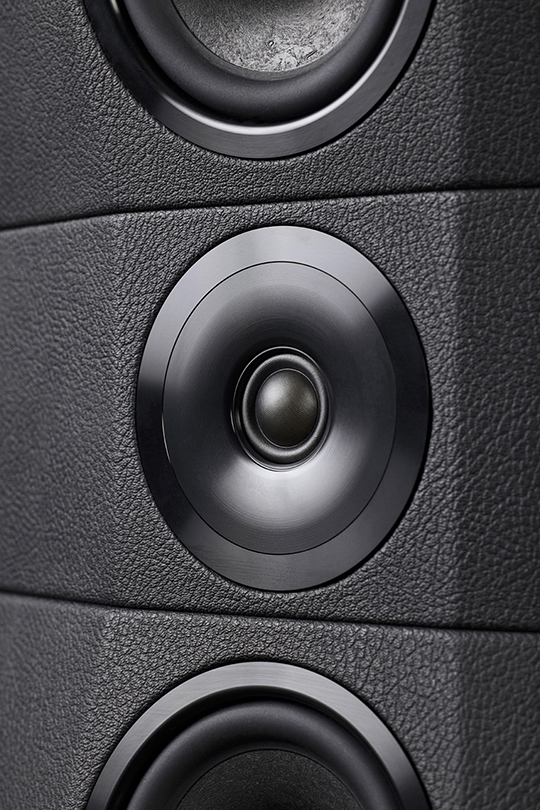
Drivers come from Scanspeak, another strong strand of Danish design DNA. In each case, the electrical parameters have been refined and specified to suit the Peak Consult mechanical and acoustic design. The 280mm long-throw bass units use 75mm voice coils and a symmetrical motor system to drive their laminated paper and foam-core diaphragms. The midrange drivers are doped paper units, with similarly sophisticated motors and mate to the doped fabric dome tweeter, with its large roll-surround. Not exactly a rim radiator – but getting there… In selecting the drivers, dynamic response and elimination of thermal or resistive compression are clearly key considerations.
The massive, hard-wired and mechanically damped crossover is located in its separate chamber, built into the base of the speaker. It uses 12db/2nd Order slopes, a decision that might offend the 1st Order purists, but it’s extremely hard to realise the benefits of 1st Order crossovers (without suffering the down-sides) unless you control every electrical and mechanical aspect of the driver designs. In other words, unless you build your own drivers, something that simply isn’t a practical proposition for a company the size of Peak Consult, given the volume of drivers it uses. Instead, 2nd order slopes offer better control of out of band artefacts, while maintaining phase coherence through the crossover points – critical to a coherent musical result. The crossovers are extensively modelled and then the crossover components selected by ear, an approach that tends towards the more expensive component options, although there is no brand dogma here. The best sounding component is selected, irrespective of source. One slightly unusual aspect to the crossovers is that they incorporate impedance compensation, making the network less reactive and the amplifier’s job easier – which as we shall see, is an important consideration.
From the cabinet build to the cone materials, the point-to-point construction of the crossovers to the hardwood cladding, what we see here is traditional materials being used in innovative, high-tech ways. It’s not really surprising, given the design oversight of Wilfried Ehrenholz (with his long history building the Dynaudio brand), Per Kristoffersen (who has developed the cabinet construction over a period of decades) and Karl-Heinz Fink (who provides support in terms of acoustic, mechanical and electrical design). A few people have marketed the ‘Dream Team’ idea over the years, but it ultimately falls apart in the face of the sheer design diversity open to the audio world. But, assuming you are going to work with wooden cabinets and a cutting edge approach to traditional driver design, this is a powerful and talented group to be working together. The rejuvenated Peak Consult gives Per Kristofferson’s highly evolved cabinet construction access to acoustic and mechanical design expertise and insight that was simply out of reach before. Karl-Heinz Fink gets to stretch his design muscles with a bigger budget than he’s used to and, overseeing it all, is the clear focus of Wilfried Ehrenholz. Like all the best teams, the skills are distributed but complementary, with each member knowing what it is they don’t know.

